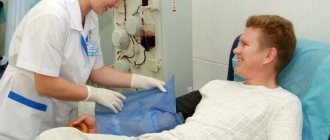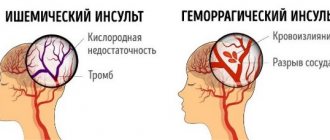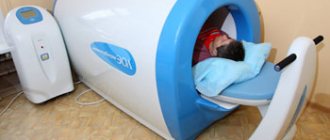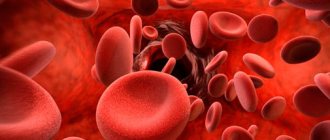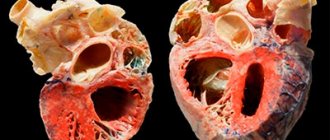The “ Recovery after coronavirus COVID19 ” drip is a way to resume the full functioning of body systems and suppress the manifestations of the consequences of coronavirus infection.
Vitamin dropper for recovery after Covid is a multi-level complex of microelements and vitamins, which is an effective way to suppress the manifestations of the consequences of COVID19. Measures to recover from coronavirus must be taken immediately after the end of the two-week quarantine.
Indications for the introduction of an IV “Recovery from coronavirus COVID19”
- breathing problems;
- frequent surges in intra-arterial pressure;
- absent-mindedness, deterioration in performance;
- heart rhythm disturbances;
- poor memory, decreased attentiveness;
- an unreasonable feeling of fatigue;
- blurred vision;
- depression, insomnia;
- problems with the digestive system.
After a preliminary consultation, the doctor examines the patient’s medical history, selects the necessary components of the vitamin dropper and gives all the necessary recommendations. The components of the dropper are selected exclusively individually. In the future, the doctor monitors the dynamics of the patient’s condition during recovery.
View price
Medical Center for Pain Treatment of Dr. Solovyov
Actovegin
The drug is a hemoderivative obtained by dialysis and ultrafiltration.
It contains 30% organic compounds (amino acids, lipids, etc.), as well as trace elements. For osteochondrosis, droppers with Actovegin are prescribed to improve trophism and stimulate the processes of regeneration of damaged tissues.
The drug stimulates the active consumption of oxygen and glucose, thereby increasing the energy potential of the cell and regulating the metabolism of neurons. Improving oxygen diffusion in neuronal structures helps reduce the severity of trophic disorders.
Dropper with Actovegin
Actovegin stimulates peripheral microcirculation, vasodilation (expansion of the lumen of blood vessels), aerobic energy exchange of vessel walls and releases prostacyclin. Thanks to this action, swelling of the affected area, hypoxia and microcirculation disorders in the area of compression of the nerve root are reduced.
For osteochondrosis, Actovegin can be administered intravenously using a dropper. The dosage ranges from 250 to 500 ml per day. The recommended infusion rate is approximately 2 ml per minute. The full course consists of 10-20 infusions. Since there is a potential risk of developing an anaphylactic reaction, it is better to conduct a test before the procedure.
Contraindications
Droppers with Actovegin are not prescribed for:
- hypersensitivity to the components of the drug;
- decompensated heart failure;
- pulmonary edema;
- anuria;
- oliguria;
- tendency to edema.
Trental
For osteochondrosis, this drug is prescribed to improve microcirculation and rheological properties of blood. It has an indirect vasodilating effect and helps eliminate circulatory disorders.
Trental injection solution
The injection solution can be administered using a dropper or a jet. Ringer's solution, 5% glucose solution or 0.9% sodium hydrochloride solution are used as a solvent for preparing the infusion composition. The dose of trental ranges from 100 to 600 mg 1-2 times a day. The duration of the infusion is determined depending on the dosage and volume of the injected product. The minimum duration of administration of 100 ml of trental is 1 hour. If the symptoms of osteochondrosis are severe, due to significant circulatory impairment, a 24-hour infusion may be prescribed. In such cases, the dosage is determined at the rate of 0.6 mg per hour per 1 kg of patient body weight. Regardless of the severity of the osteochondrosis clinic and the patient’s body weight, the daily dose cannot exceed 1200 mg. As a rule, the maximum volume of solution for infusion is 1.5 liters per day.
Contraindications
Droppers with trental are not prescribed for:
- bleeding tendency;
- hemorrhagic stroke;
- retinal hemorrhage;
- pregnancy.
The drug is prescribed with caution if the patient has the following diseases and pathological conditions:
- atherosclerosis of coronary and cerebral vessels in severe form;
- arrhythmia;
- cardiac ischemia;
- gastrointestinal diseases;
- frequent fluctuations in blood pressure
Eufillin
The product improves peripheral and cerebral circulation, eliminates muscle spasms, and has an analgesic effect. Its use in osteochondrosis is mainly due to the last two properties.
Eufillin capsules for dropper
For drip administration, a solution of aminophylline (10-20 ml) is diluted with an isotonic solution of sodium hydrochloride (100-150 ml) 100-150 ml. The rate of administration should be from 30 to 50 drops per minute. The maximum single dose of the drug is 0.25 g, daily dose is 0.5 g.
Contraindications
Droppers with aminophylline for osteochondrosis are not indicated for the following concomitant diseases:
- hypertension or hypotension;
- heart pathologies;
- epilepsy;
- pulmonary edema;
- thyrotoxicosis;
- renal or liver failure;
- tendency to bleed;
- hypersensitivity to the drug.
Vinpocetine
Droppers with vinpocetine are prescribed for cervical osteochondrosis. This drug helps to correct cerebral circulatory disorders, which occur quite often in this form of the disease. Vinpocetine dilates blood vessels and has an antihypoxic effect due to increased transport of oxygen and glucose. However, it does not have a pronounced effect on the heart and peripheral circulation. The active substance selectively affects the affected areas and improves brain metabolism.
For cervical osteochondrosis, vinpocetine is administered using a dropper. The maximum infusion rate is 80 drops per minute.
The initial dosage should not exceed 20 mg per day, or 2 ampoules. The concentrated product is diluted with a solution for intravenous administration.
In the future, the dose can be increased to 50 mg per day. Course duration is 10-14 days.
Ozone drippers
For osteochondrosis, droppers with ozonated saline solution are also quite effective. In this case, a composition with a fairly low ozone concentration is used. This method provides a long-term effect on the internal environment of the body.
The procedure allows you to:
- normalize metabolic processes;
- improve microcirculation;
- restore oxygen transport;
- dilate blood vessels;
- reduce the severity of the inflammatory process;
- strengthen the immune system.
Drip administration of ozonized saline solution is carried out in two ways:
- infusion against the background of continuous bubbling - in this case, the solution remains saturated throughout the entire procedure;
- infusion with cessation of bubbling during the procedure - in this case, the dose that the body receives in 30 minutes is equal to 67% of the dose received with continuous bubbling.
Contraindications
Ozone drip administration is not prescribed for:
- acute phase of myocardial infarction;
- allergies to ozone;
- low blood clotting;
- internal bleeding;
- thyrotoxicosis;
- thrombocytopenia;
- hypotension;
- hypoglycemia;
- acute pancreatitis.
Components of the IV "Recovery from coronavirus COVID 19"
Coronavirus infection aggressively affects all systems of the body, so the recovery process must be comprehensive. One of the main tasks is to provide all systems with complete vitamin nutrition. The main components contributing to recovery from Covid are:
- vitamin D – necessary for the absorption of calcium and its distribution throughout bone tissue, activates the immune system, is normally produced by the body under the influence of sunlight;
- B vitamins - a large group of vitamins that strengthens the immune system, regulates metabolism and normalizes blood sugar levels; do not accumulate in the body (with the exception of B12), so it is normal to consume them daily (along with food, vitamin therapy, IV drip, and so on);
- vitamin C - stimulates the production of leukocytes necessary to fight bacteria and microbes, prevents cell damage, stimulates their growth and tissue cellular regeneration;
- glucose – eliminates symptoms of intoxication, increases energy reserves, and is necessary to restore a depleted body.
Give me an IV!
“Doctor, why weren’t they prescribed IVs for me? You stuff them with pills, but don’t treat them.” Such remarks from patients are not uncommon. The vast majority of our compatriots, especially middle-aged and elderly people, unquestioningly believe in the healing power of infusions and happily provide their veins for traumatic manipulations. At the same time, in the West, infusion therapy is used only in exceptional cases. Let's figure out which tactics are optimal.
Subtleties of introduction
A drip, or intravenous drip infusion, is a method of delivering various solutions, usually of an impressive volume (100–500 ml) directly into the blood. This type of drug administration gained particular popularity in Soviet medicine in the second half of the last century, and for good reason.
The effect of the introduction of an IV “Recovery after coronavirus COVID19”
To achieve maximum effect, vitamin infusion during the recovery period can be carried out in combination with physical therapy procedures. Restorative droppers are prescribed as a course. If the patient strictly followed the prescribed treatment and complied with the doctor’s recommendations, positive results will be noticeable from the first procedure (however, this depends on how seriously the body was affected during the period of the disease).
The duration of recovery also depends on how timely the patient sought help from a doctor. Treatment with a dropper “Recovery from coronavirus COVID 19” allows you to cope with the consequences of the disease and prevent the development of complications, normalize the functioning of the immune system, saturate the body with essential minerals, vitamins and trace elements, improve the functioning of the circulatory system and speed up metabolism.
Infusion therapy (drips)
infusion therapy techniques is extensive; it can be prescribed in many cases of patient illness, as well as for the prevention and prevention of diseases such as bronchitis, pneumonia, influenza, as well as stress, apathy, chronic fatigue and other types of disorders.
Before the procedure, the doctor examines the patient, conducts a survey for complaints, and analyzes the general state of health. If you have chronic diseases or drug intolerance, you should definitely inform a specialist about this so that the procedure can be adjusted.
Infusion therapy helps in preparation for surgical operations, and also helps to compensate for the lack of vitamins, minerals and trace elements in the body. Droppers administered by infusion therapy effectively replenish strength and give energy, improve metabolism. Infusion therapy procedures are in demand among people who play sports and lead a healthy and active lifestyle.
Infusion therapy is divided into several types:
- Antibiotic therapy, infusion therapy;
- Anti-inflammatory infusion therapy with analgesic effect;
- Infusion therapy to support the heart and blood vessels;
- Infusion therapy to improve cerebral circulation;
- Infusion therapy to cleanse the body (detox);
- Infusion therapy for the treatment of diabetes mellitus.
Antibiotic therapy by infusion therapy has a great advantage over the use of oral antibiotics. In some situations, it is necessary to achieve the effect of the drug as soon as possible. An antibiotic administered intravenously will begin to act much faster, since it immediately enters the bloodstream and does not slow down the onset of action of the drug due to the process of absorption into the intestines.
Anti-inflammatory infusion therapy with an analgesic effect is designed to relieve painful spasms in a short time; the doctor prescribes a drug with individual dosage selection; these can be analgesic, anti-inflammatory, sedative and other drugs, the action of which is aimed at eliminating the pain syndrome.
Infusion therapy to support the heart and blood vessels is used in various cases, for example, to restore heart rhythm, treat heart failure, and eliminate angina. The infusion therapy procedure to maintain the heart and blood vessels is recommended if symptoms such as increased blood pressure, pain and weakness in the limbs, impaired speech and vision, pain in the chest and heart are detected.
Infusion therapy to improve cerebral circulation helps prevent the occurrence of atherosclerosis, strokes, vascular spasms and other diseases. Droppers to improve cerebral circulation help in recovery after strokes, normalize blood circulation in blood vessels, improve attention and help activate human mental activity.
Infusion therapy to cleanse the body (detox) allows you to free the body from toxins and toxic substances. Most often, people with problems and pathologies such as obesity, sleep disorders, and bad habits that destroy the human immune and nervous system resort to this procedure. Detox droppers accelerate the process of cellular regeneration, act on the body both internally (improves overall health) and externally (have a positive effect on the condition of the skin, fight signs of aging), and help fight stress.
Infusion therapy for the treatment of diabetes mellitus helps improve microcirculation and restore normal functioning of metabolic processes. Often, infusion therapy is used in the planned treatment of diabetes mellitus during periods of complications.
Infusion therapy is carried out by a highly qualified specialist, since it is necessary to take into account the individual indicators of the patient’s health status and know the characteristics of the behavior of various drugs.
The procedure for introducing a drip of infusion therapy takes place in several stages:
- Preparation of the injection area - treatment with antiseptic agents;
- Fixation of the vein with a tourniquet;
- Inserting a needle, removing a tourniquet;
- Connection to the needle of the infusion system;
- Opening the clamp - the flow of drops of the drug.
- End of the procedure: removing the clamp, removing the needle from the vein;
- Manipulations to stop bleeding.
Before undergoing the procedure, be sure to consult your doctor!
Types of strengthening droppers
The following types of infusion therapy can be used to strengthen the body:
- Detoxification drips
- cleansing the body, accelerating metabolism, removing toxins, breakdown products and free radicals. Particularly effective for those who are overweight, as well as for patients suffering from alcoholism and drug addiction. - Restorative droppers
- ensure active regeneration of tissues of all organs that have become the target of harmful factors, and fill the patient’s body with energy complexes. - Antianemic drips
- involve the infusion of iron preparations, which helps to increase hemoglobin in the blood and, accordingly, has a positive effect on the level of oxygen saturation of cells. - General strengthening
- vitamins, minerals, trace elements, nutrients, plant extracts, amino acids and other broad-spectrum drugs can also enter the body through droppers, producing a pronounced general strengthening effect. - Droppers of youth and beauty
- this type of infusion is also called intravenous cosmetology. They involve the introduction of drugs aimed at improving the aesthetic characteristics of the body (skin, hair, nails, etc.) from the inside.
Why are strengthening droppers needed?
The essence of the technique is the drip introduction of a medicinal solution into the patient’s bloodstream in sufficiently large volumes, which makes it possible to saturate the cells with the drug and at the same time replenish the body’s need for clean water.
The drip method of administering medications has significant advantages over taking tablet medications. First of all, intravenous drip infusions make it possible to achieve maximum absorption of the drug, which is explained by the direct introduction of the active agent into the patient’s blood. The second important aspect of this method is the limited number of possible side effects, achieved by excluding the gastrointestinal tract from the drug absorption chain.
Components of the Heart Health Support IV IV
The Heart Health Support drip is prescribed to patients who are at risk for cardiovascular pathologies. The main components of the dropper are magnesium and phosphocreatine.
- magnesium – one of the main functions of this component is to suppress stress, magnesium inhibits excessive excitation, makes the body less sensitive to external influences, relaxes the muscles of internal organs; magnesium is involved in the synthesis of enzymes and the production of protein molecules, dilates blood vessels and regulates cell growth;
- phosphocreatine - has a membrane-stabilizing, cardioprotective, antiarrhythmic and metabolic effect (improves the metabolism of muscle tissue and myocardium), ensures the functioning of the energy mechanism of muscle contraction.
How are IVs placed?
The intravenous infusion system is a thin flexible tube made of polymer material, at one end of which there is a thick short plastic needle, at the other end there is a metal needle, like on a regular syringe. There is a special clamp on the tube - it is used to regulate the speed of infusion.
A thick needle is used to pierce the stopper of the bottle with the solution, a thin needle is inserted into a vein and secured with a plaster. The solution enters the vein under the influence of gravity - therefore the bottle must be inverted and raised. For this, special tripods are used.
Intravenous drip infusion is a rather long procedure, and some medications may make you feel a little dizzy, so the patient is placed on a couch.
What to do if a person has “bad” veins, and an IV needs to be placed more than once? For such cases, there are convenient intravenous catheters. This catheter is a thin tube with a needle inside. After insertion into the vein, the doctor pulls out the needle, but the catheter remains - it has special “wings” for which it is convenient to attach it to the skin with a bandage. Many catheters are equipped with an additional port. You can quickly flush the catheter through it or administer medication.
The intravenous catheter can be worn for 3 days. Then it must be removed, otherwise inflammation may begin in the vein.
